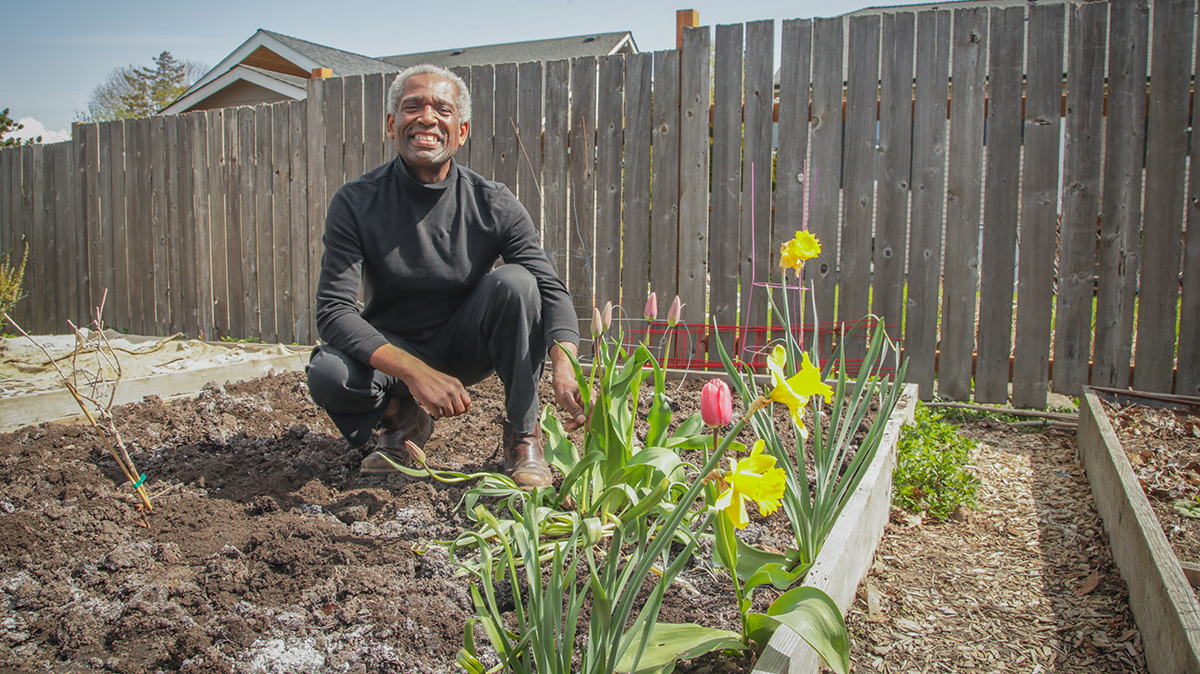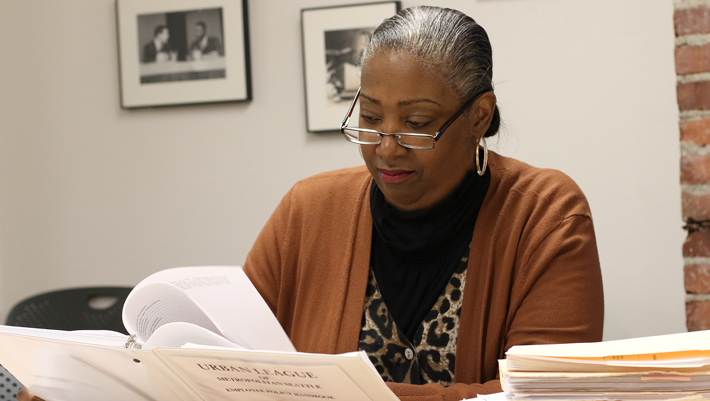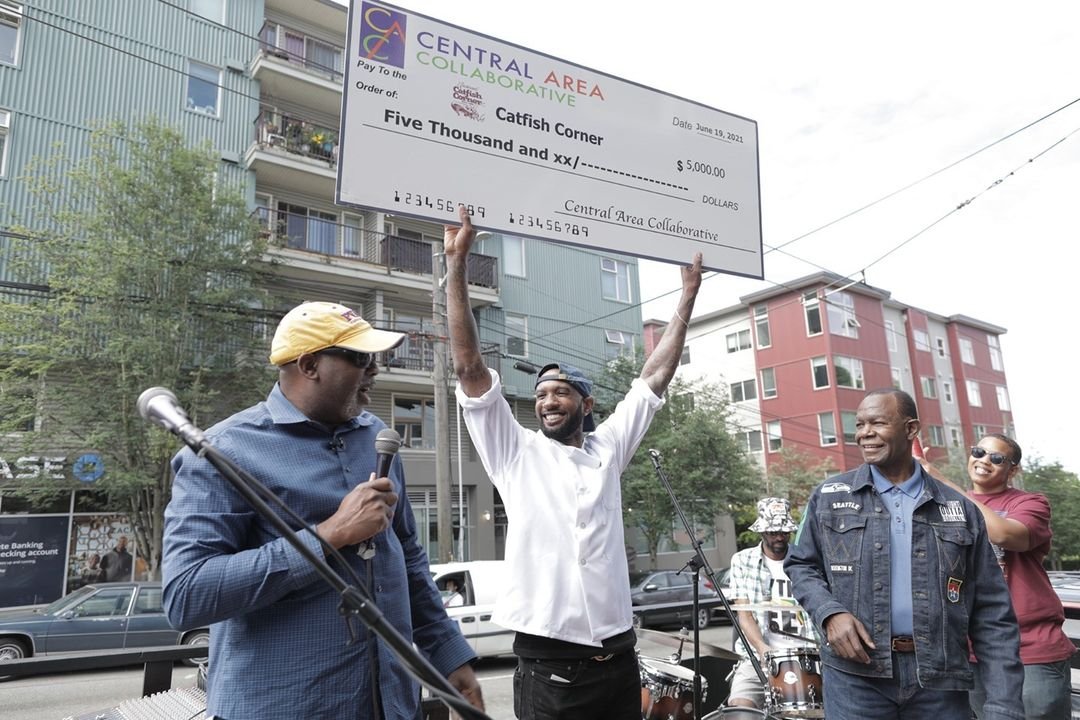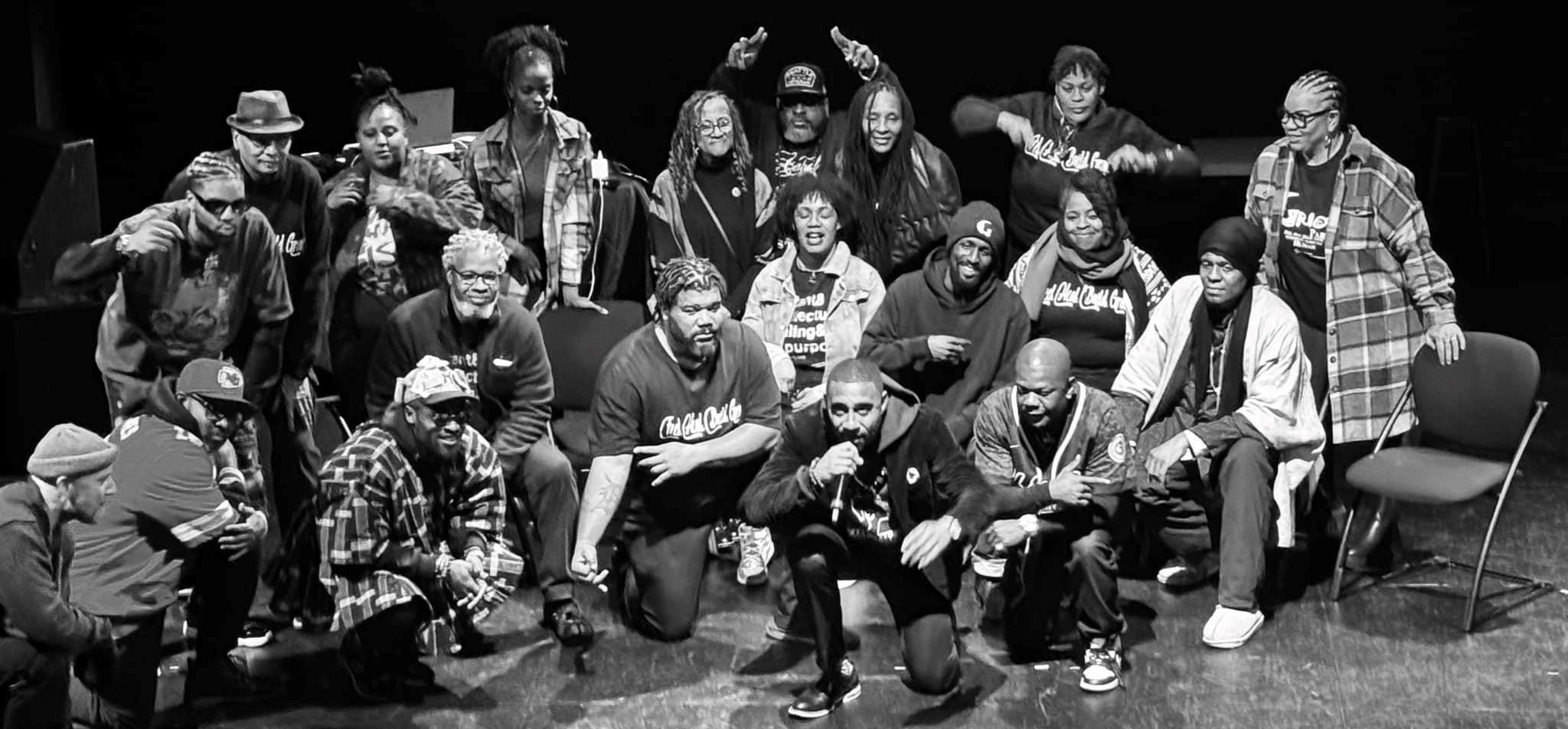
Jerry Cole, Hawkins P-Patch
How long have you been gardening at Hawkins P-Patch?
I’ve been here about 15 years. I was one of the first gardeners at this P-Patch. It was undeveloped land when I came into it. Martha Goodlett and others, including myself, just pitched in and cleared the whole area. Then, of course, came building boxes. We’ve rebuilt them about three or four times because just being wood, with moisture they rot, so again, we all pitch in when we need to rebuild them from time to time. It’s been a wonderful experience. I’ve had some hard years, like when my brother-in-law got really sick and I moved in and took care of him, which was a 24-hour job. I couldn’t be here, I just didn’t have the time. I let the leaders know and they saved my plot, didn’t give it away or anything, which I really appreciated. Sometimes like that I’ve thought about giving it up, but I know I would regret it as soon as I let it go. I’m going to hold on as long as possible.
What is your favorite plant to grow?
I’ve grown everything from collard greens, various types of tomatoes, radishes, corn, jalapeno peppers, lemon cucumbers, which look like a lemon with yellow skin, but are actually a cucumber. They are quite good if you like cucumbers. I had strawberries, but they ended up taking over the whole plot and didn’t produce any strawberries! But, I would say, cherry tomatoes are my favorite thing to grow, because they are so sweet and delicious.
What is your favorite aspect of the community garden?
I understand that Mr. Hawkins, an African American man owned this property and at some point, he donated to the City where it eventually got turned into a P-Patch. I believe his daughters were up here a few years ago, but I was at work and couldn’t make it. I’m sorry I didn’t get a chance to meet them, but glad they could see the space.
I like being in the community where I grew up. I was born and raised right here in the Central Area. I live about six blocks from [the garden] now. I’m, what, I guess they call, a local native. I went to school at Madrona Elementary at 34th and East Union. I went to Meany Middle School and graduated from Franklin High School. So I’ve been here quite awhile.
Having grown up here, you’ve witnessed a lot of changes to the neighborhood. How have those changes impacted the garden and the community?
In the sense of gentrification, yes, I’ve seen a lot of changes in the neighborhood. I have mixed feelings on that. There were some African Americans who came here during WWII and they bought homes up here, primarily because this was the only area they could buy homes. All the other areas where they might have been interested in living were redlined by banks, so they grew this community. Well now, with the gentrification process which is going back at least a decade, maybe more, it’s majority white again and we’re the minorities in terms of numbers in the neighborhood.
It’s been interesting because, in my opinion, too many whites are afraid of African Americans. I experience it now, myself, and I’m 63. They are still fearful when I am present or someone who looks like me is present. That’s not to say that all whites fit that description, but too many of them still do. I think for many of them, they’ve just never lived around African Americans, so they just don’t know quite how to relate to a lot of us. So there is some friction there. When I talk to a Caucasian person who is comfortable being in my presence, that’s how we build bridges instead of more walls. We badly need that across our whole country, and it’s been going on for hundreds of years. You stay over there, I’m over here. I have privilege over here and we don’t care if you don’t because you don’t look like us or talk like us.
How does the community garden help break down racial barriers and build bridges?
We need to talk to each other. It’s interesting how something like growing vegetables can get people into talking to each other. This garden is a perfect place to interact with people who don’t look like you or talk like you, but when you garden next to each other you build those bridges of communication and trust. Then, you see barriers drop, and unity happens. I would like to see that more in this country. Places like the garden are great for people to meet others, get to know each other, and build trust. Eventually, you have the conversation of “Hey would you like to come over to my house for dinner? You bring some of your vegetables, I’ll bring some of mine.” Just getting to know people, be comfortable, and those bridges begin to form.
I have seen more positive Black and white relationships cultivating in the park on the other side of this block. I watch people, I see white kids, their parents are pushing them on the swing, Black kids their parents are pushing them on the swing, and people are just talking. It’s a space kind of like the garden. People coming together with a common shared interest.


